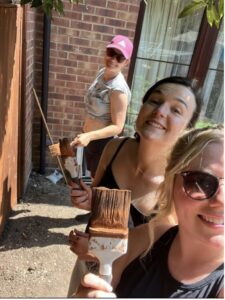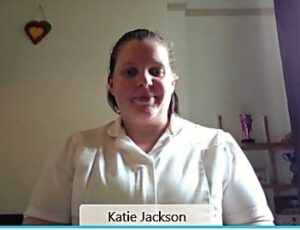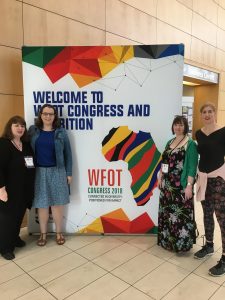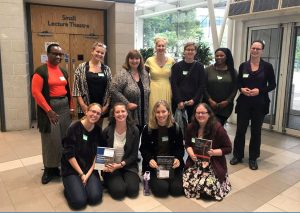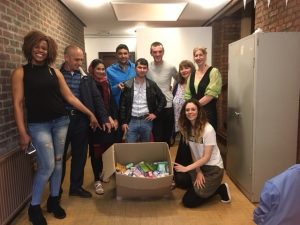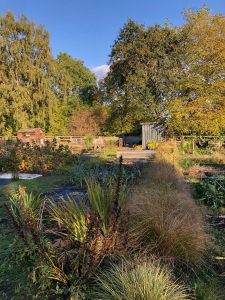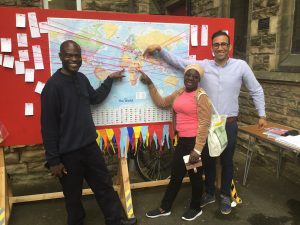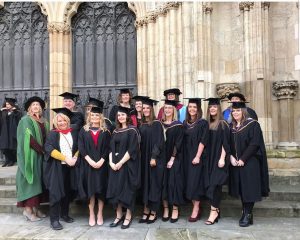This blog has been written by two of our academic staff, Dr Hannah Spring and Dr Fiona Howlett. We are posting this in Occupational Therapy Week 2023 to showcase a very successful collaborative community engagement project with a Ukrainian refugee family and occupational therapy students from YSJ.
During summer 2023,occupational therapy students at York St John University have been working closely with a Ukrainian refugee family to restore their back garden. The family did not arrive in the UK on the Government Homes for Ukraine scheme and therefore on arrival were not subject to the benefits of this scheme. York City of Sanctuary took on the task of finding housing for the family and in the spirit of philanthropy this was granted by two local Quakers who had a rental property available. The property, however, needed significant renovation and repairs before it could be occupied and the Quakers put considerable funds and effort into making the property habitable. Grateful for this kind intervention from the Quakers, York City of Sanctuary set out to do something to say thank you. The only remaining area left in need of attention was the garden and hence, ‘The Backyard Project’ was born. With our ongoing reputation for supporting sanctuary seekers through green spaces, the occupational therapy team at York St John University were absolutely delighted to be asked by York City of Sanctuary to take on this project. It was an honour to have the opportunity to make difference to a Ukrainian family in York and with the help of four enthusiastic students putting their occupational therapy skills to use, worked collaboratively and compassionately with the family to create a meaningful outdoor space for the family to enjoy. And what a transformation! Both the family and ourselves at YSJU are blown away with the result. And as a learning experience for the students, this work has fed into their final year occupational therapy research projects and they had a lot to say about their experience!
“We found the project to be an empowering and rich learning experience. We are grateful for the lovely connection and friendship we built with the family through a mutual interest in gardening, where we learnt new skills from each other, had fun along the way and learnt more about the Ukranian culture. We enjoyed spending time with the family whilst we developed the garden and valued their insight and input” (Libby Cartwright and Nikoletta Szabo, Final Year Occupational Therapy Students
“As an occupational therapy student I was overjoyed when I learned that the family shared an interest in gardening as this allowed both our meaningful occupations to coincide. The physical difference made to the garden is something that everyone involved should be so proud of and we should always advocate for more projects like this to be done as it definitely makes an impact”
(Sophie Rowland, Final Year Occupational Therapy Student)
“The back yard project was an amazing opportunity to be a part of. Working in collaboration with the family, we managed to create a little corner of paradise that offers a safe and meaningful space to be enjoyed by all”
(Katy Wood, Final Year Occupational Therapy Student)
Below are some photos of the project.
BEFORE:
AFTER
OUR OCCUPATIONAL THERAPY STUDENT TEAM ENJOYING THE EXPERIENCE!
We thank York City of Sanctuary for this opportunity to collaborate on an important social justice related matter and look forward to more in the future.
Dr Hannah Spring and Dr Fiona Howlett





